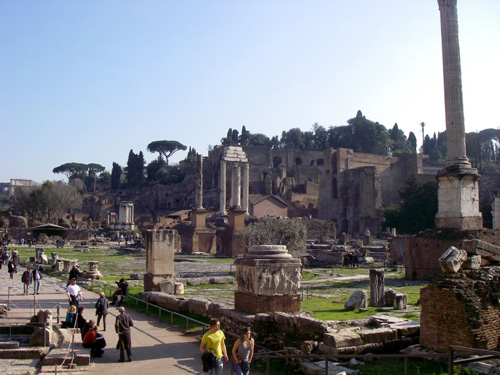« Previous week | Lecture and Studio Notes index | Next week »
Studio 3: Sorting Hat into Project Camps
Lecture 5: Knowns vs. Unknowns
Studio 3: Sorting Hat into Project Camps
Part 1: The Sorting Hat
Based on the ideas from your letters, comic strips and storyboards the class will be organized into temporary camps. These camps are intended to cluster related projects and will include all the interesting corners and regions of the project areas you’ve defined so far. Each camp will also be assigned one or more senior biological engineering student(s) from 20.902 as the camp counselor(s). Once sorted, you, your camp-mates and your counselor(s) should review and catalog the ideas that got you there. In cataloging your ideas, you should include
- a name for each project
- a one sentence description of the problem or opportunity it will address
- and any idea you’re working on as a solution.
Prepare this catalog as a powerpoint presentation that you will show to the class. The last slide in your presentation should be a recap slide to review all the ideas presented. The last hour of the studio time will be dedicated to the presentation of these camp catalogs.
Part 2: Mapping the World of Projects
Pull up a chair and listen as your classmates present their catalogs of ideas. As you listen , you should make note of those projects from each camp that are most interesting to you and why. For tomorrow you will be asked list your top choice and your second choice for camps and your top three project ideas.
The following presentation files are courtesy of the student authors and used with permission.
- Infectious diseases: “Catch me if U can” (PDF - 4.1MB)
- Growing organs, meat, crops: “Growing, growing, grown” (PDF)
- Biofuels: “Powering up” (PDF)
- Neurology: “Bettering the human condition” (PDF - 4.8MB)
- Chronic disease: “Come out swinging” (PDF)
- Waste problems: “Trash talkin’” (PDF)
Homework
Due at next class.
Lecture 5: Knowns vs. Unknowns
Some framing information about counting and clocks in biology (PDF)
Challenge: The Clock of the Long Now
Humans have had a stable climate for about 10,000 years, let’s hope for another 10,000 at least. Assuming no catastrophic events, what would you like to build now that could still be working 10,000 years from now? How could you build such a long-lasting artifact? Wisely anticipating future needs is part of it. For example carpenters in the 14th century built marvelous wooden cathedrals. At the same time, the builders knew that the beams of the structures would eventually need replacing. So, they planted trees, preparing hundreds of years ahead by providing for the future raw materials needs. What else might need to be pre-positioned to perpetuate an artifact through time?

Ruins of the Roman Forum. (Photo by Drew Endy.)
Instructions: Find your “camp-mates” from yesterday and work together to design a clock inspired by Danny Hill’s specifications for the Clock of the Long Now. Danny called for “a clock that ticks once a year, the century hand advances once every one hundred years, and the cuckoo comes out on the millennium. I want the cuckoo to come out every millennium for the next 10,000 years.” Several design considerations will be important to discuss as you think about how to build a clock that will behave as expected until the year 12,000. Your clock must only keep track of time and years. No cuckoo is needed unless you want one. You will have 45 minutes to address these aspects of your clock’s design and documentation:
- longevity: how will you keep the clock working, presuming you’ll have all and only the technology and materials that are available today?
- maintenance: how will your children’s children’s children keep this clock working? You can assume they’ll be as smart but no smarter than you.
- user’s guide: how will future generations understand this clock without stopping or disassembling it?
- improvements: how will you improve your clock over time? It should be possible to improve the clock over time?
- prototyping: how will you build and test your clock?
Begin by reviewing the rules for brainstorming (see Part 3 on the Team Building page <**link to section>) then either build consensus around one idea or take a vote for the top 3 and then the top choice. Once the general idea for your clock is set, get to work on each of the design elements listed above. After 45 minutes, each table will report back to the group. You may want to organize your ideas or sketch your plan on the whiteboards.
|
Why are we doing this?? Designing in the absence of complete knowledge is the norm, not the exception. Once our “clocks for the long now” have been described, we’ll work as a class to add more ideas, questions and thoughts about good designs despite incomplete understanding. We can also collect the problem solving techniques that worked well and those that didn’t. Comments from 2009 students (courtesy of the students and used with permission):
|
Homework
Due at next week’s studio.
« Previous week | Lecture and Studio Notes index | Next week >










